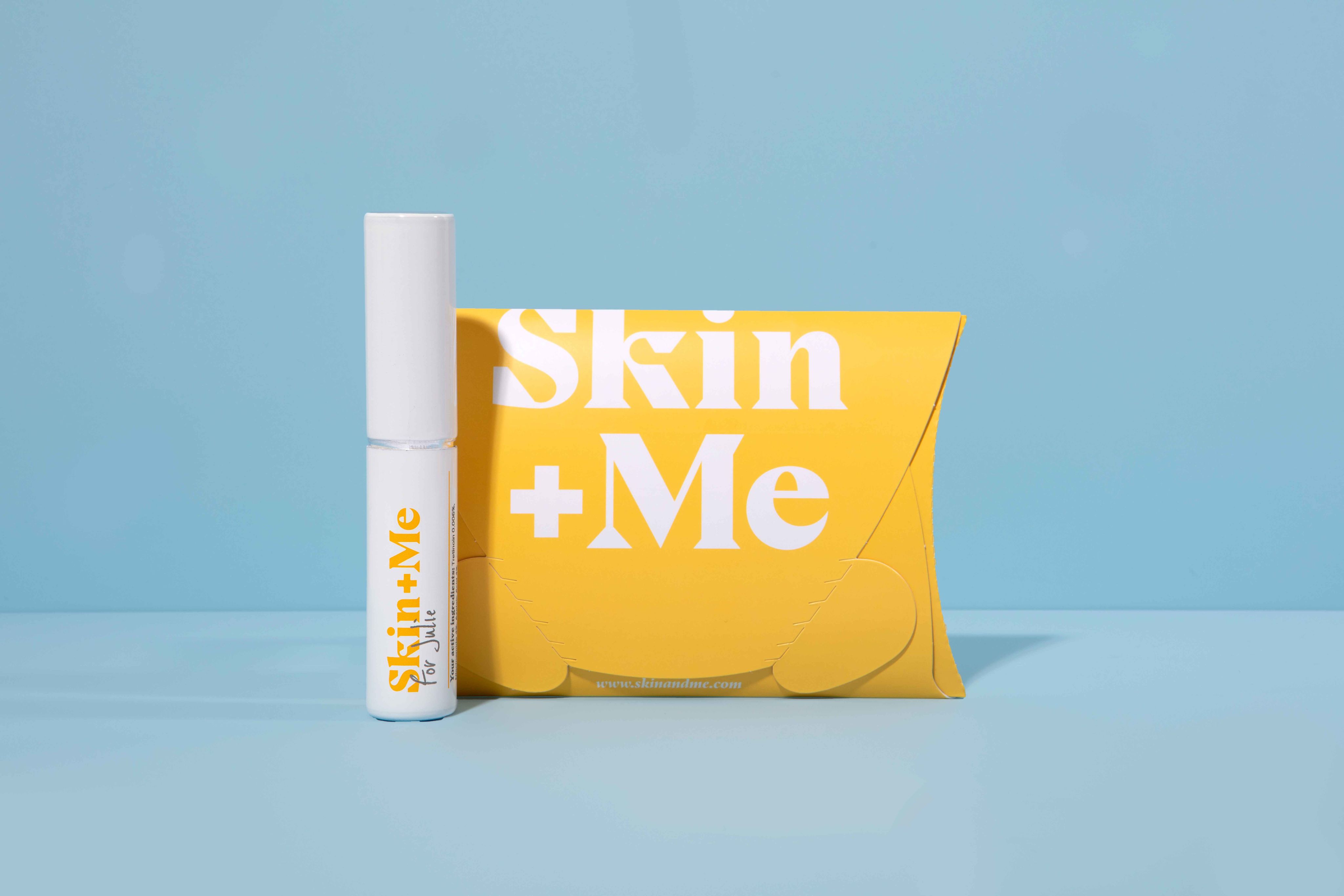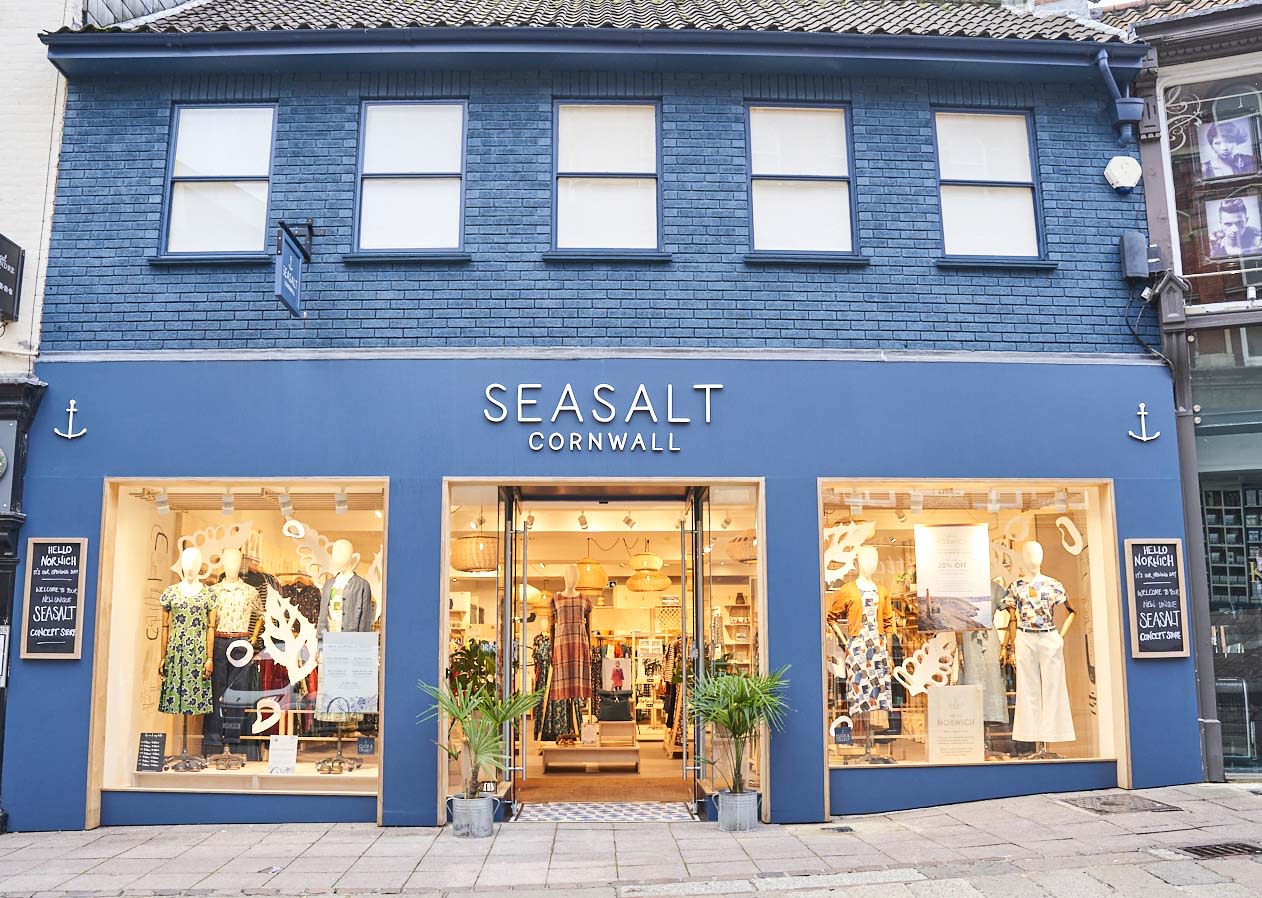
The shockwaves that blasted through the retail sector in the past two years have resulted in turmoil for many businesses. Some have been obliterated while many have had to grapple with new ways of doing business to survive.
At the same time, this new environment – an evolved consumer landscape with digital coming to the fore – has created the conditions for certain brands to thrive.
A new generation of disruptive businesses – start-ups as well as more established brands – are successfully tapping into the new consumer psyche by delivering an exceptional customer experience and driving repeat purchases and long-term loyalty.
These brands are increasingly bypassing the traditional role of the retailer as an intermediary between supplier and buyer and going straight to the customer.
They share many of the same traits: the use of customer data to deliver a personalised service; the ability to build communities of loyal fans on social media; and a strong purpose and ethical mindset with sustainability especially high on the agenda.
As these innovators raise the bar for customer experience, other retailers and brands face getting left behind. As Hector Hickmott, sales director at digital transformation specialist HSO, explains: “The pandemic has enabled those who have invested in the platforms, tools and capabilities to understand their customer and respond to them both digitally and remotely to thrive, whereas those that were a bit behind or not quite taking it seriously have come unstuck.”
By profiling some of the most disruptive consumer businesses currently operating in the UK and across the globe, this report, produced in partnership with HSO, will explore how a new breed of innovators has emerged during the pandemic and the customer experience strategies they are executing to drive loyalty.
In addition, it will examine the lessons more mainstream retailers can learn from this exciting new generation of consumer-obsessed brands.
Winning strategies in this report
Retail Week has determined the five key strategies all retailers should focus on in 2022 and beyond in order to succeed in a market transformed by technology and shifting consumer attitudes.

Bloom & Wild
The flower subscription brand’s annual sales broke through the £100m barrier during the pandemic thanks to its innovative business model and sophisticated use of technology and data.
Founded in 2013 by friends Aron Gelbard and Ben Stanway, Bloom & Wild has sought to fill a niche for a superior-branded proposition in a market historically dominated by supermarkets.
Bloom & Wild’s most famous product is its letterbox bouquets, removing the need for customers to be at home.
By working with partner growers in Kenya that ship directly to the UK, Bloom & Wild has slashed the time from harvesting to delivery, meaning flowers stay fresher for longer.
“We’re trying to be the company that people love and trust in the flower space, and if we can increase touchpoints where they can get to know us, then all the better,” Gelbard told Retail Week in an interview last year.
- Bloom & Wild raised funds of £105m in 2021, allowing it to acquire French rival Bergamotte and Dutch competitor Bloomon
- The business employs an almost 100-strong tech team, including six data scientists

Bookshop.org
Launched in the US in early 2020 – and in the UK in November of that year – as an alternative to Amazon, Bookshop.org is an online bookshop with a mission to financially support independent booksellers.
Customers ordering through the website can choose a specific local bookshop to support, which then receives 30% of the cover price of all their orders for a year. Otherwise, 10% of the cover price of each order goes into an earnings pool that is evenly distributed among participating independent bookshops each month.
Bookshop.org UK managing director Nicole Vanderbilt – Etsy’s former vice-president for international – says its target customer is someone who cares about the fate of their local high street and small businesses, both in their community and across the UK.
“Our customers are readers who understand and believe in the importance of independent bookshops, and are keen to support them even when shopping online,” she adds.
- More than £2m has been raised for independent bookshops since the launch of the platform
- Bookshop.org is a registered B-Corp, meaning it is verified to meet high levels of social and environmental performance, transparency and accountability

Bower Collective
Bower Collective is one of a new breed of ethical brands selling household and personal care products in reusable packaging direct to the consumer via subscription. It was launched in January 2020 via tech investment firm Founders Factory and scaled through its start-up accelerator.
Through smart use of AI and data, the company is able to accurately predict what products customers will need and when they will need them replaced.
Currently Bower Collective has around 30,000 subscribers after just two years of trading. Its target customers are what co-founder and chief executive Marcus Hill describes as “conscious consumers” who are passionate about tackling plastic waste and creating a more sustainable home.
“It is these people, our customers, that are having the impact and we are here to help them,” he says.
- Bower Collective’s revenue has grown by 20% month on month since its launch in January 2020
- With more than 2,000 Trustpilot reviews, the brand has a rating of 4.8 out of five
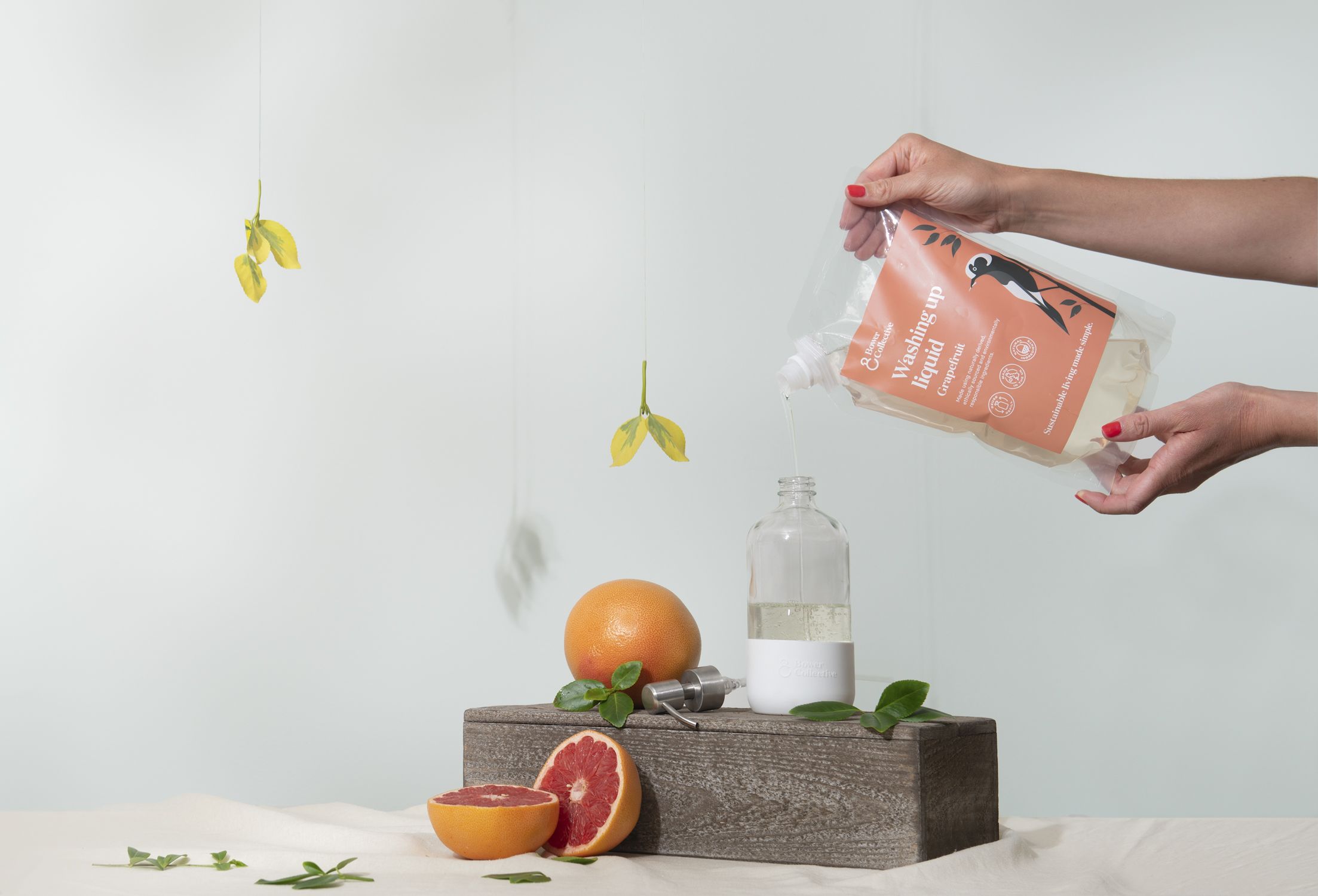
Estrid
Established in Sweden in 2019, Estrid provides affordable, quality vegan razors for women and men delivered directly to their doors. Its products are completely free from any animal byproducts and the business only works with suppliers and third parties that do not test on animals.
The business is driven by a determination to tackle stereotypes around female body hair and to challenge gender-based discriminatory pricing.
It has quickly built up a loyal following on social media, with 396,000 followers on TikTok and 170,000 followers on Instagram.
“As a company and brand, we wish to use our platforms to share content that supports our values and spreads joy to our community,” says co-founder Amanda Westerbom.
“Everyone has body hair. And therefore Estrid is for everyone, independent of why and where they shave, who they are and how they choose to identify themselves.”
- Estrid is now available in 12 different markets
- The business raised €15m (£12.5m) in December 2020 to fund its further expansion

Innocent
As a 23-year-old supplier of traditional grocery products, Innocent may look out of place in a list of largely digital-native brands. But the company is still considered a trailblazer in ethical trading, as well as providing an object lesson in the successful use of social media to build loyalty.
Now majority-owned by Coca-Cola, Innocent is in the process of developing a cutting-edge carbon-neutral drinks factory in Rotterdam, the Netherlands, known as ‘The Blender’. Once complete, Innocent will be able to make all its drinks under one roof as part of its target to be carbon-neutral by 2025.
The business has also built a reputation as a pioneer in using social media to build customer engagement and loyalty, striking a balance between humour and sharing product news and content.
Innocent was founded in 1998 by Richard Reed, Adam Balon and Jon Wright, and sold to Coca-Cola in 2013.
- Innocent is investing €223m (£188m) in building its new factory, The Blender
- The brand has almost 300,000 followers on Twitter and 139,000 followers on Instagram

Pasta Evangelists
The pasta subscription service founded in 2016 has delivered an explosion in revenues in recent years, driven by the start of the pandemic when people were ordered to stay at home. Turnover has jumped from £79,000 in 2017 to more than £21m in 2021.
Customers can order from a weekly menu of 15 recipes, which are delivered chilled to their door on the day of their choosing. Prices start at around £6.50 a meal with the option to create bespoke weekly menus.
The business is increasingly pursuing a multichannel approach, having struck distribution deals with supermarkets Ocado and M&S, and established a takeaway service through Deliveroo.
“We want our customers to recognise the fresh, artisan nature of our pasta: unlike ostensibly fresh pasta sold in supermarkets, our products are artisanally – rather than industrially – made,” says co-founder and chief marketing officer Finn Lagun.
- In 2022 Pasta Evangelists aims to double its 2021 revenues to around £40m
- It now has more than 20 dark kitchens in London, Bristol, Manchester and Reading

Seasalt
Fast-growing fashion business Seasalt is showing that stores can still play a critical role in delivering a great customer experience and driving loyalty across all channels.
Originally founded as a single shop in 1981 by the Chadwick family, called General Clothing Stores, it was extended into a fashion brand by brothers Leigh, Neil and David in 2001. All three are still involved in the business today. Current chief executive Paul Hayes is the first non-family member to lead the company.
Seasalt says its stores offer “the ultimate Seasalt brand experience for customers” and are a vital way of recruiting and retaining consumers. Stores also act as community hubs on the high street, with events and personal styling appointments available.
The retailer’s financial performance was hit by store closures during the pandemic, but strong growth online has helped to compensate. Total sales fell 7.4% to £70m in the year ending January 2021, with store sales down 57% and online up 82%.
Seasalt has invested heavily in its online business in recent years. It launched new websites for Ireland and the rest of the world in 2020 and relaunched its core UK site in July 2021.
The Cornish retailer plays heavily on its coastal heritage and believes its creativity sets it apart from other fashion brands. “We are passionate about our home in Cornwall and always stay true to our distinctive aesthetic,” says chief marketing officer Amy Thom.
Seasalt says its purpose is to inspire women of all ages to dress with creativity and confidence. It aims to place thoughtful design, quality and versatility ahead of a fast-fashion approach.
- Seasalt enjoyed a bumper Christmas with total sales surging 33% in the five weeks to January 1, 2021, compared with the same period in 2019
- It has partnered with retailers including M&S, Next and Zalando to sell Seasalt products via their marketplaces
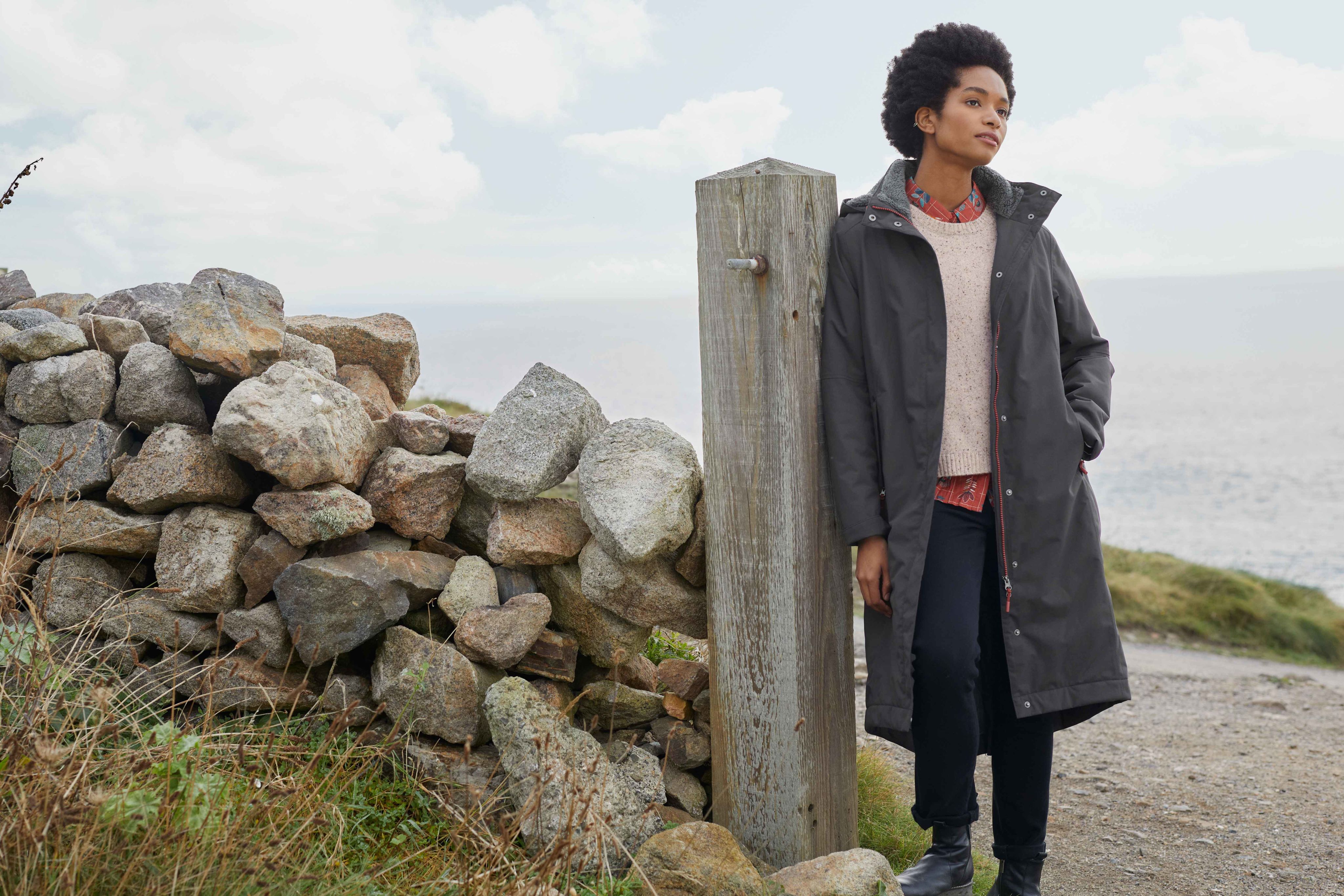
Skin + Me
The DTC platform Skin + Me aims to democratise dermatology and take on the beauty giants with personalised skincare solutions.
Launched in 2020, Skin + Me is considered to be at the forefront of personalisation technology. Customers receive an online consultation with a dermatologist who then creates a solution for their specific skin needs.
Skin + Me initially focused on creating solutions for women in their 20s and 30s for whom persistent skin issues are commonplace.
“As we’ve grown and our customer base has increased so rapidly, it’s been amazing to see how the concept of personalised skincare has caught the attention of a much wider demographic than we first expected,” says co-founder and chief customer officer Rachel Jones.
“We now have customers ranging from 17 to over 70, with a wide range of skin goals, who are seeing incredible results.”
- In the past year, revenue at Skin + Me grew by more than 500%
- The company has received more than 2,000 five-star Trustpilot reviews, with an average score of 4.6
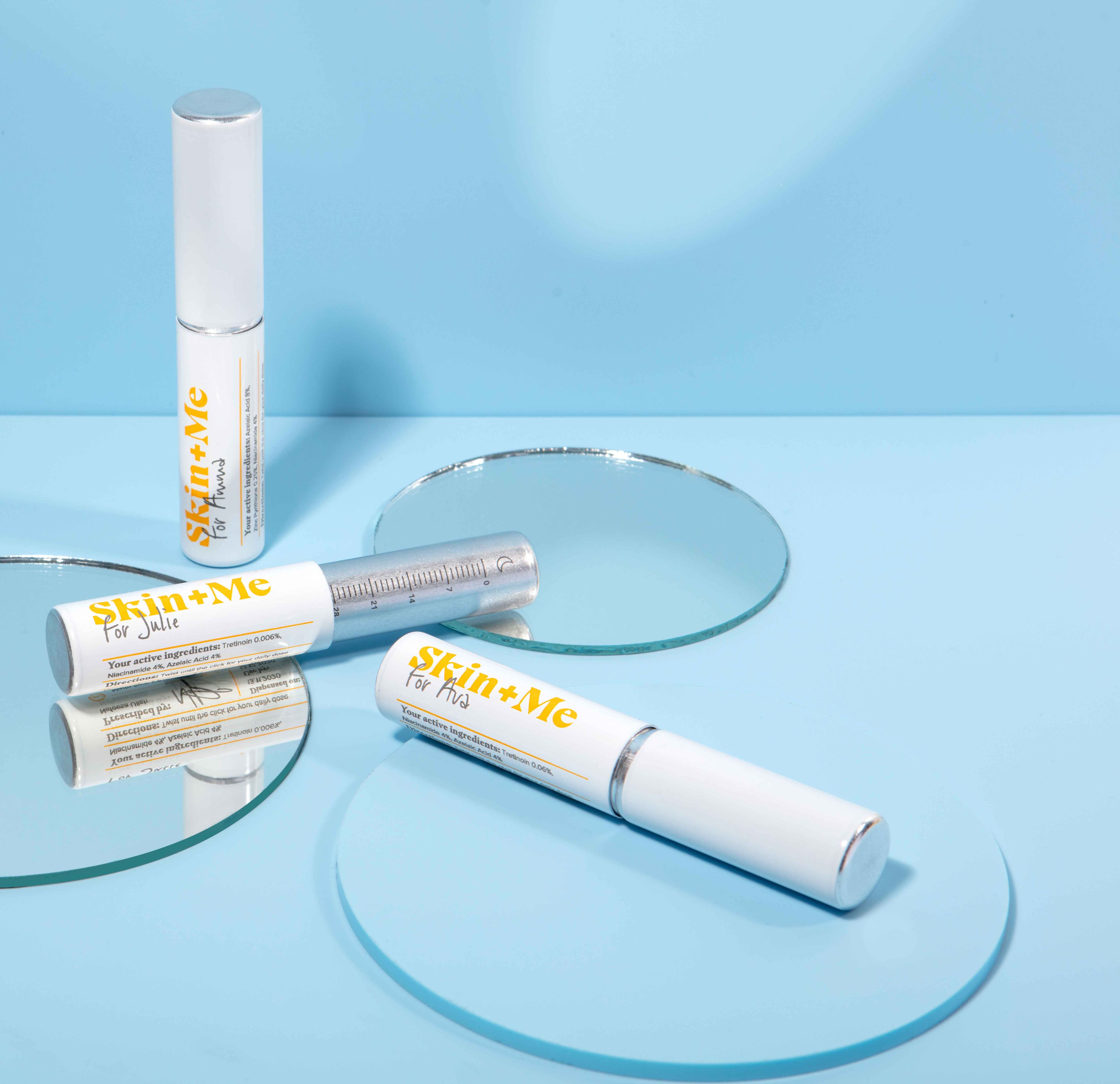
Who Gives a Crap
Toilet roll subscription service Who Gives a Crap was launched in 2012 via a crowdfunding campaign and delivered its first product in March 2013.
Ethics are at the heart of the business proposition. Founders Simon Griffiths, Jehan Ratnatunga and Danny Alexander launched the business when they learnt that 2.4 billion people globally have no access to a toilet, meaning that around 289,000 children under five die every year from diarrhoeal diseases caused by poor water and sanitation.
Half of the company’s profits are used to help build toilets and improve sanitation in the developing world.
The product range now spans tissues, toilet rolls and dream cloths – a kitchen towel substitute. Customers can either make a one-off purchase or subscribe and choose their order frequency, with toilet roll subscriptions starting at around £28 for 24 rolls.
- Who Gives a Crap raised funds for the first time in September, clinching AUS$41.5m (£26.3m) from a consortium of investors led by Verlinvest. Strategic investors include former Unilever chief executive and sustainability expert Paul Polman
- Its products are 100% plastic-free
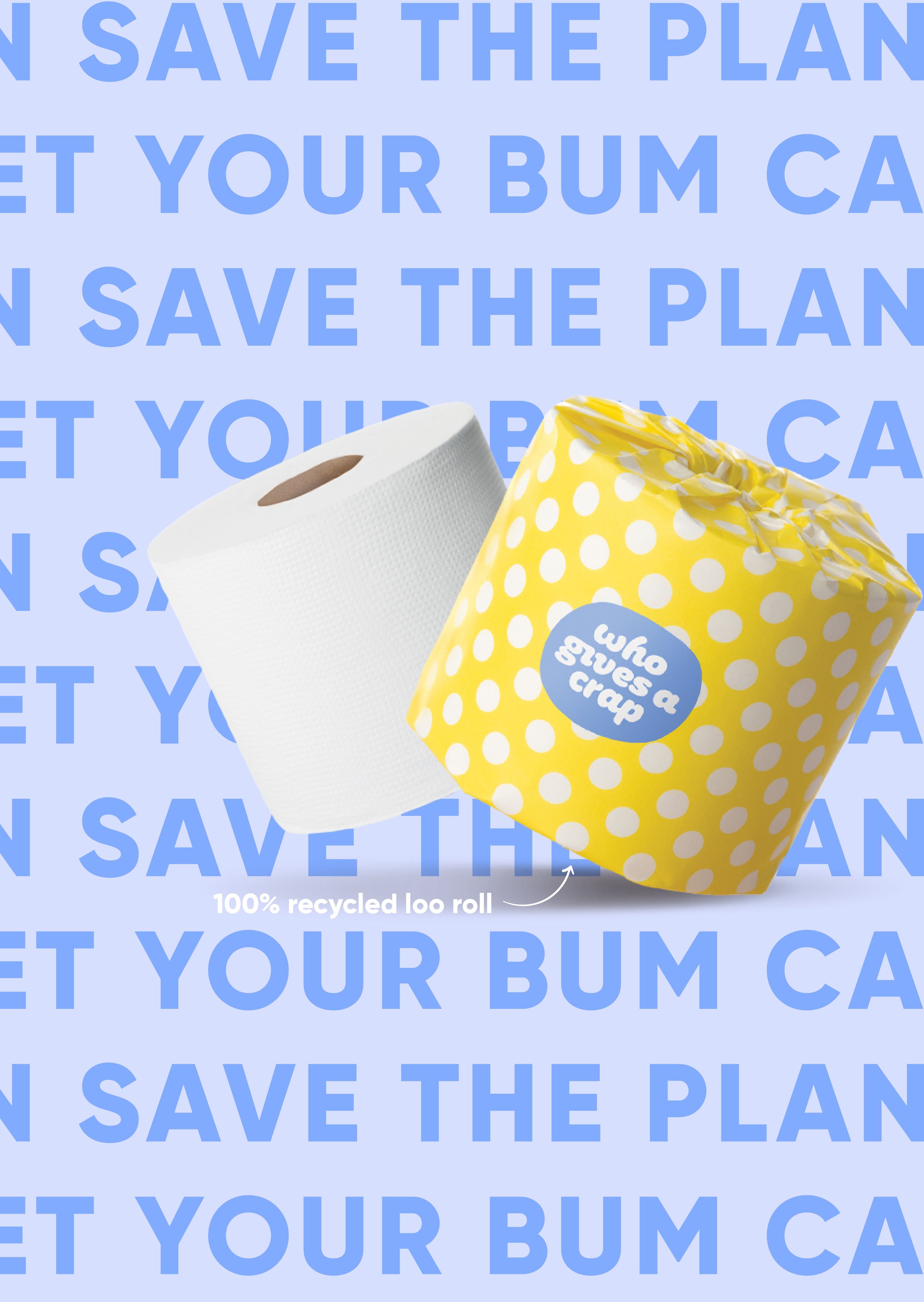

Data is the sector’s most valuable currency. Yet all too often retailers don’t take full advantage of the quantity and quality of customer data at their disposal.
“They're collecting a lot of data, but what they don't tend to do very often is take intelligent actions off the back of it. The whole point of personalisation is that you can capture the exact needs of that individual customer,” says Martin Shave, retail industry lead for Microsoft Business Applications.
Brands that use data to its full potential are able to piece together a single view of the customer and use it to make effective marketing decisions. HSO’s Hickmott says these retailers and brands have “got the ability to engage with their customers in a way that creates a sense of magic. If you don't have that, you're going to be outgunned over time.”
Many of our disruptors are raising the bar in their use of customer data to enable personalisation, which in turn drives customer loyalty. Bloom & Wild has put data at the very heart of its model, employing six data scientists among a 50-strong tech team to ensure the business has the right number of bouquets to sell in any one week, minimising waste.
“We figure out how many we’re going to sell based on traffic and marketing inputs, we track if we’re ahead or behind the cumulative curve of where we should be and recommend action based on that. If that message shows up saying ‘not available’ too often then we become less useful to our customers,” explains Gelbard.
Bloom & Wild’s algorithm can predict when a customer is likely to shop for a specific type of bouquet – for a family member’s birthday, for example – by monitoring saved occasions stored in customers’ accounts. It also calculates the optimum time to send out emails to prompt orders.
“We invite customers to rate the dishes they eat and provide us with comments – these are passed directly to our chefs so we can make targeted improvements“
Pasta Evangelists takes a similarly scientific approach to optimising the customer experience. “We gather significant amounts of data about our customers' habits, likes and dislikes,” Lagun says. “For instance, we invite customers to rate the dishes they eat and provide us with comments – these are passed directly to our chefs so we can make targeted improvements to dishes that do not delight our customers.”
The company uses heatmaps to analyse website visits and understand which areas are most appealing and which need to be earmarked for redesign or improvement.
Data is also used to identify customers that might be on the verge of cancelling their subscription and initiate strategies for retention. “Through CRM and email automation we are able to contact customers when they display signs of lapsing or losing interest, to attempt to win them back with product launches. For instance, telling customers who have previously bought only plant-based products about our new vegan carbonara,” says Lagun.
“We’re incredibly privileged to really understand exactly what our customers want for their skin and we use that data daily, throughout the business, to drive all our decisions”
Many subscription-based businesses use questionnaires and consultations to gain an initial picture of customers’ preferences and then use transaction data to build upon that knowledge base.
Skin + Me has put a heavy focus on its online consultation process, ensuring it captures all the personal, medical and lifestyle information a dermatologist would discuss in a face-to-face appointment. “The more customers that use our service, the more we learn from their behaviour, to refine and improve the experience,” says Jones.
“We’re incredibly privileged to really understand exactly what our customers want for their skin and we use that data daily, throughout the business, to drive all our decisions, from ingredient selection and formulation planning to packaging design and content ideas.”
The personal touch
New Bower Collective customers are invited to answer questions on its homepage to ‘build their own Bower basket’.
“We use this data on their unique household to tailor products to suit them,” says Hill. “By using data, we deliver the right amount of product to our customers at the right time.”
In the early days, Bower Collective took the opportunity to speak personally to customers on the phone after purchases to gather feedback. It would then combine these qualitative insights with data from Google Analytics to make incremental changes to the shopping experience. For example, the simple addition of a four-step infographic helped users better understand its reuse and refill proposition, which improved the website conversion rate.
Brands using data to improve the customer experience can’t afford to stand still in an ever-evolving consumer landscape. “When you're in success mode, you've got to invest in the basic infrastructure and modern way of operating – otherwise that’s you done,” says Hickmott.
Seasalt is one brand committed to continuously learning more about its customers and responding to their changing demands. At the end of 2020, it launched a renewed focus on data to help it gain a greater understanding of customer behaviour.
“We are using this insight to deploy targeted customer lifecycle retention campaigns and personalised experiences,” says Thom. “In 2021, we replatformed our website, allowing us to create distinct customer journeys. Our focus on data forms a significant part of our business plan through to 2025.”
For many businesses, the use of artificial intelligence goes hand-in-hand with the ability to personalise the offer. But there is still a place for a human touch.
“We really believe in the power of human curation,” says Vanderbilt from Bookshop.org. “Our site experience is centred on lists created by people, not algorithms – people who work in bookshops, love books and actually read and respond to titles before recommending them.
“While we will never be able to replicate the experience of going into an indie bookshop – and we suggest everyone does so whenever they can – we believe our lists bring a small piece of human curation and expertise to the online experience.”

Bloom & Wild’s algorithm can predict when a customer is likely to shop for a specific type of bouquet
Bloom & Wild’s algorithm can predict when a customer is likely to shop for a specific type of bouquet
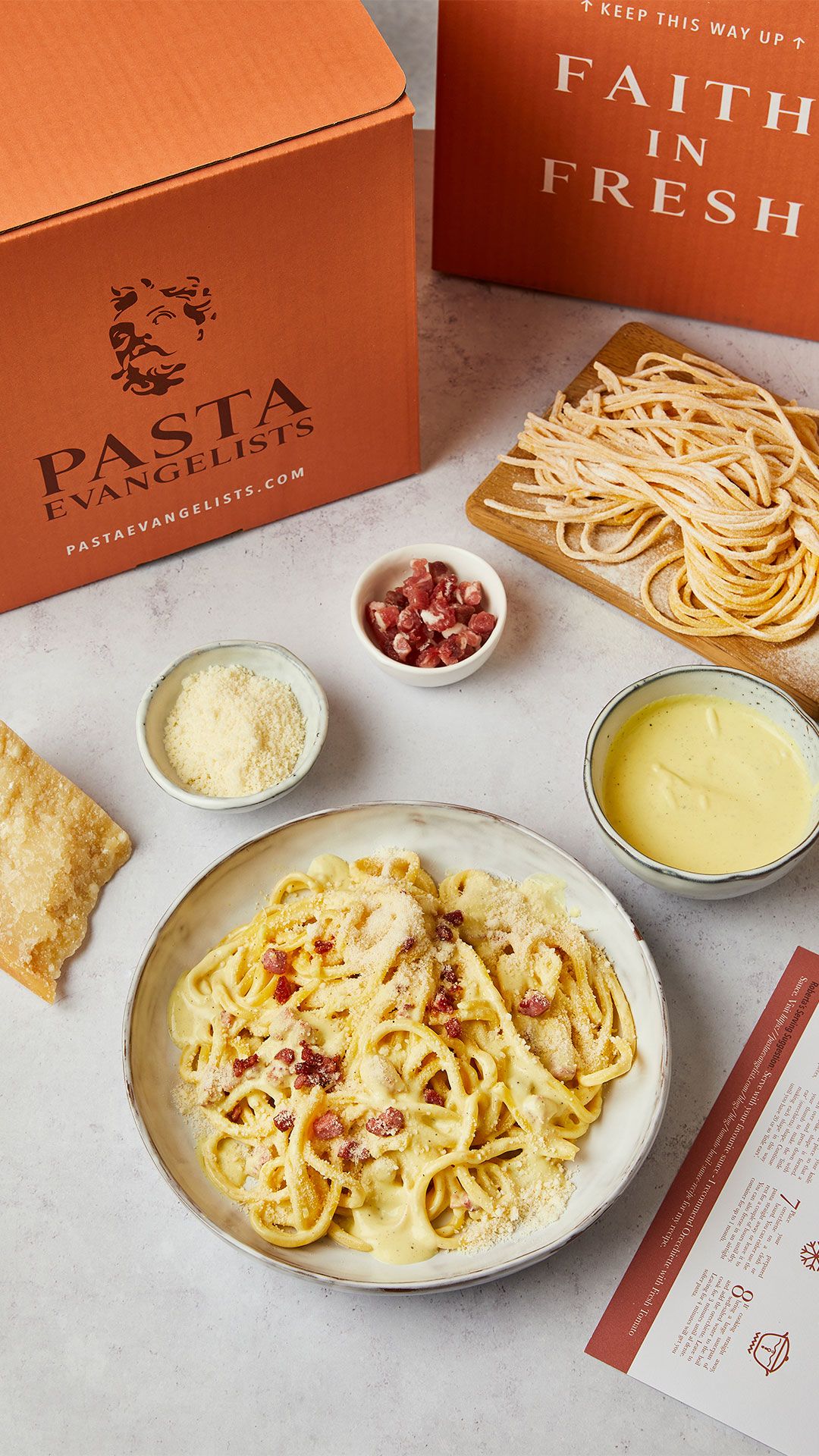
Pasta Evangelists uses heatmaps to analyse website visits
Pasta Evangelists uses heatmaps to analyse website visits
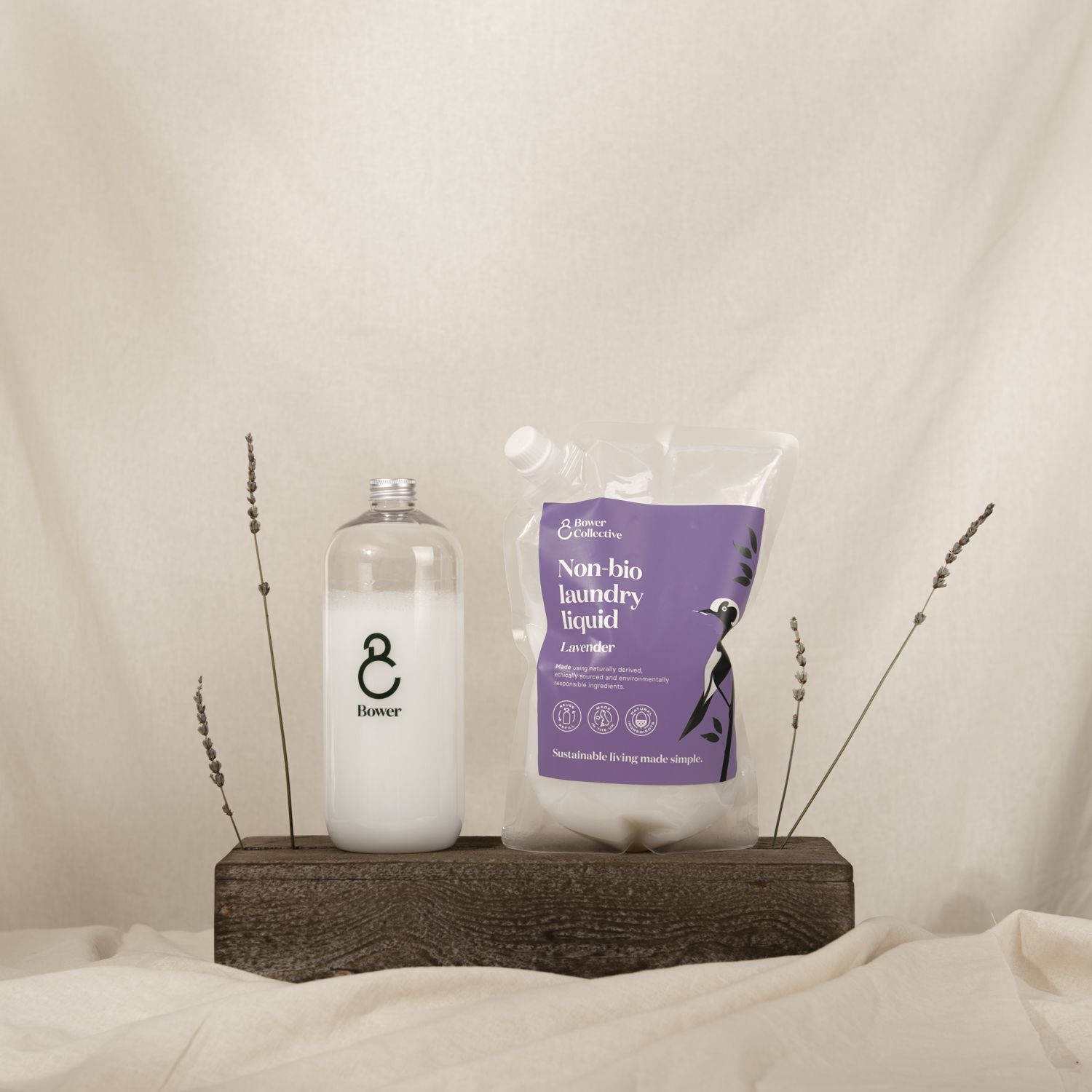
Bower Collective customers are invited to answer questions to build a ‘Bower basket’
Bower Collective customers are invited to answer questions to build a ‘Bower basket’
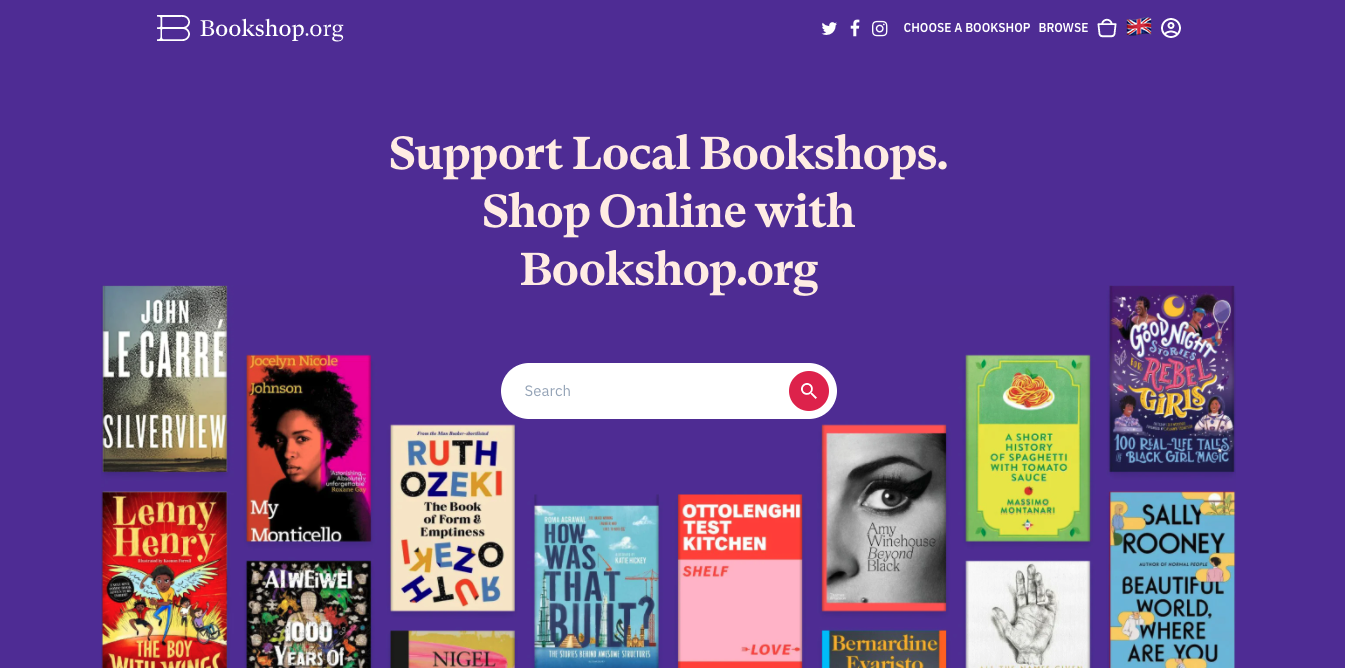
Bookshop.org’s site experience is centred on lists created by people, not algorithms
Bookshop.org’s site experience is centred on lists created by people, not algorithms
How subscriptions lock in loyalty
Subscription services are an ideal way to collect rich customer data and keep consumers tied into a retailer’s ecosystem.
They were growing before the pandemic, but Covid-19 created the conditions to accelerate their move into the mainstream. Back in 2019, Royal Mail forecast that the subscription-box market would be worth £1bn in sales in the UK by 2022. However, its most recent Subscription Box Market Report, published in June 2021, showed the market had more than doubled in size in three years. UK consumers spent more than £1.4bn on subscription boxes in 2020 alone, with more than 88 million subscription boxes delivered across the country.
Microsoft’s Shave says subscription models can be attractive to brands because they are “more sticky” than selling a product via a third-party retailer. “Once you've got that initial purchase done, the chances of the customer moving to another retailer that offers the same sort of thing is quite slim,” he says.
Once brands have a customer “on the hook”, Shave says they can drive retention by collecting as much data as they can and enriching that data through analysis, making predictions about the customer’s intent and acting upon it.
Modern subscription schemes are helping to confound old notions that customer loyalty is simply about offering people rewards. “Loyalty for me is not just around loyalty schemes – it’s the ability to be agile and nimble and creative, and to change your product mix and proposition quickly,” says HSO’s Hickmott.
Brands like Pasta Evangelists, which have the ability to tweak the product offer constantly in response to consumer feedback, exemplify this mindset.
“Each incremental improvement made will help improve loyalty and decrease churn”
For Hill from Bower Collective, the key to a successful subscription service is solving a real problem and giving the customer what they want. “You need to be delivering an excellent product with outstanding customer service and a great online experience,” he says.
“Each incremental improvement made will help improve loyalty and decrease churn. Conversely, a poor online experience, weak product or bad service will increase your churn.”
Skin + Me says it builds loyalty by taking the burden of finding the right product – in this case, skincare – away from the customer. “All our customers need to do is tell us exactly what they’re looking to achieve with their skin and our expert dermatology team will do the hard work for them,” says Jones.
“Our pharmacists create personalised night-cream formulations for every customer, containing a selection of highly effective active ingredients that are only available by prescription. The ingredients often start at low concentrations, best suited to each customer’s needs, and the formulations evolve over time to help them achieve their individual skin goals.”
Jones says Skin + Me prides itself on the service it provides, with regular progress check-ups, a reformulation guarantee and round-the-clock support – “something customers just don’t get when buying off-the-shelf skincare from a traditional retailer”.
Gifting is another avenue through which subscription-based brands can attract new customers and turn them into loyal fans. Gelbard noted how many people discovered Bloom & Wild for the first time during lockdown in this way, with many recipients going on to become future customers.
“With Estrid you don’t just buy any old razor, you buy into our point of view, which is a more inclusive and colourful future”
Ultimately, the new generation of subscription-based retailers and brands are as keen for customers to buy into their community and ethos as their products. “With Estrid you don’t just buy any old razor, you buy into our point of view, which is a more inclusive and colourful future,” says Westerbom.
“We always strive to add a bit of magic through our communication and products, and we always want to deliver more than what’s expected of us. We believe that exceptional customer service and being community-driven in everything we do is one of the key drivers of loyalty and engagement.”


One characteristic that unites all our disruptors is their commitment to ethics and sustainability. Responsible retail brands are increasingly having to interrogate every aspect of their supply chain and operation to ensure they minimise their environmental footprint and treat people with respect.
Those that fail to do so risk a backlash from customers. Retail Week research released in March 2022 revealed that the majority of consumers (55%) are more likely to buy from a retailer or brand with strong ethical and sustainable credentials. Gen Z, in particular, is more likely to be sustainability conscious when it comes to buying decisions.
Investors, too, are increasingly giving weight to businesses’ net-zero commitments.
Jones says sustainability was at the heart of Skin + Me’s decision-making process from day one. “We knew we wanted to design packaging that could give customers exactly the right amount of product every day, minimising wastage, and something that could be easily recycled, too. In addition, all of our formulations had to be vegan and cruelty-free.”
When the business looked at the packaging that was readily available, most contained high levels of plastic. “Most skincare products today still come in single-use plastic bottles with pumps. On average, they use six types of plastic and a steel spring – which makes it virtually impossible to recycle,” Jones explains. “So we invested a large amount of time and money in developing our innovative aluminium Daily Doser packaging in house, from scratch.”
Packaging is an area where subscription-based brands are stealing a march on more mainstream rivals, in part because the logistics of home delivery make it simpler to return packaging for reuse or recycling. Bower Collective customers, for example, simply decant the product into one of the company’s reusable dispensers and return the packaging in a pre-paid envelope.
Businesses are also making products last longer. Estrid’s razor is made from steel and can be reused for years, while the flexible nature of a subscription service means customers can get new cartridges delivered to their doorstep as often or as rarely as they like.
Meanwhile, Who Gives a Crap has put international development at the heart of its business model. It partners with a range of charities to provide proper sanitation in the developing world, with a focus on sustainable, scalable solutions.
Its partners include the NGOs Splash, which brings water, hygiene and sanitation services to children in the world’s densest cities; and Water & Sanitation for the Urban Poor, which works to prepare cities for urbanisation and addresses the current lack of services in informal settlements.
“All of your buildings and assets are constantly churning out data about things like energy and water usage. Once you have sight of that, you can take action and make improvements”
Businesses are also looking to build sustainability into the manufacturing process. Innocent’s new carbon-neutral factory in Rotterdam will use electricity from renewable energy sources, including solar panels and two on-site wind turbines. Water use will be reduced through the installation of a cleaning system that uses mostly air, rather than water. The water used on site will be returned to Rotterdam's water network through an on-site treatment plant, while rainwater will be used to flush the toilets.
For businesses looking for ways to reduce their environmental impact, Microsoft’s Shave says data can hold many of the answers. “All of your buildings and assets are constantly churning out data about things like energy and water usage. These kinds of things are now measurable so collecting that data and having a dashboard view of it is quite a simple thing to do. Once you have sight of that, you can take action and make improvements.”
Logistics is another focus for brands looking to reduce their environmental impact. Innocent, for example, is targeting transport emissions. Juice that needs to be distributed by road will be transported using the world's first heavy-duty, zero-emission electric trucks.
Meanwhile, Bloom & Wild is rethinking the traditional distribution model for flowers, which usually involves the product passing through a large number of hands between being cut and reaching the end recipient – a journey that can take 10 to 14 days. Each step adds cost and waste, which increases the environmental impact and ultimately shortens the life of the flowers in the vase.
To combat this, Bloom & Wild works with partner growers in Kenya that ship directly to a cargo airport in the UK, where the flowers are rehydrated and conditioned, packed and given to Royal Mail to be delivered within three days or less, meaning customers get to enjoy them for longer.
The brand has won plaudits from customers and other retailers for its responsible approach to marketing. Back in 2019, the business started receiving requests from customers to be kept off their Mother’s Day mailing lists. Now Bloom & Wild makes sure customers who have opted out see no products related to that sensitive occasion on the website or the app. It also began a campaign to bring other brands and businesses on board, gifting them with tools to remove mentions of certain products for customers.
Concerns around the concentration of corporate power and inequality are also spawning new ways of doing more ethical business. Vanderbilt says Bookshop.org’s entire reason for existence is to try to provide consumers with a more ethical way to buy books online. “Our biggest commitment is to the independent bookshops who benefit from each and every sale on the platform and who receive the majority of the profits,” she says.
As sustainability and ethics rise up the priority list for consumers, brands need to be on the front foot. Not only must their business models stand up to scrutiny, but they must learn how to communicate this to customers and leverage it as a point of difference.

Who Gives a Crap partners with charities to provide sanitation in the developing world
Who Gives a Crap partners with charities to provide sanitation in the developing world
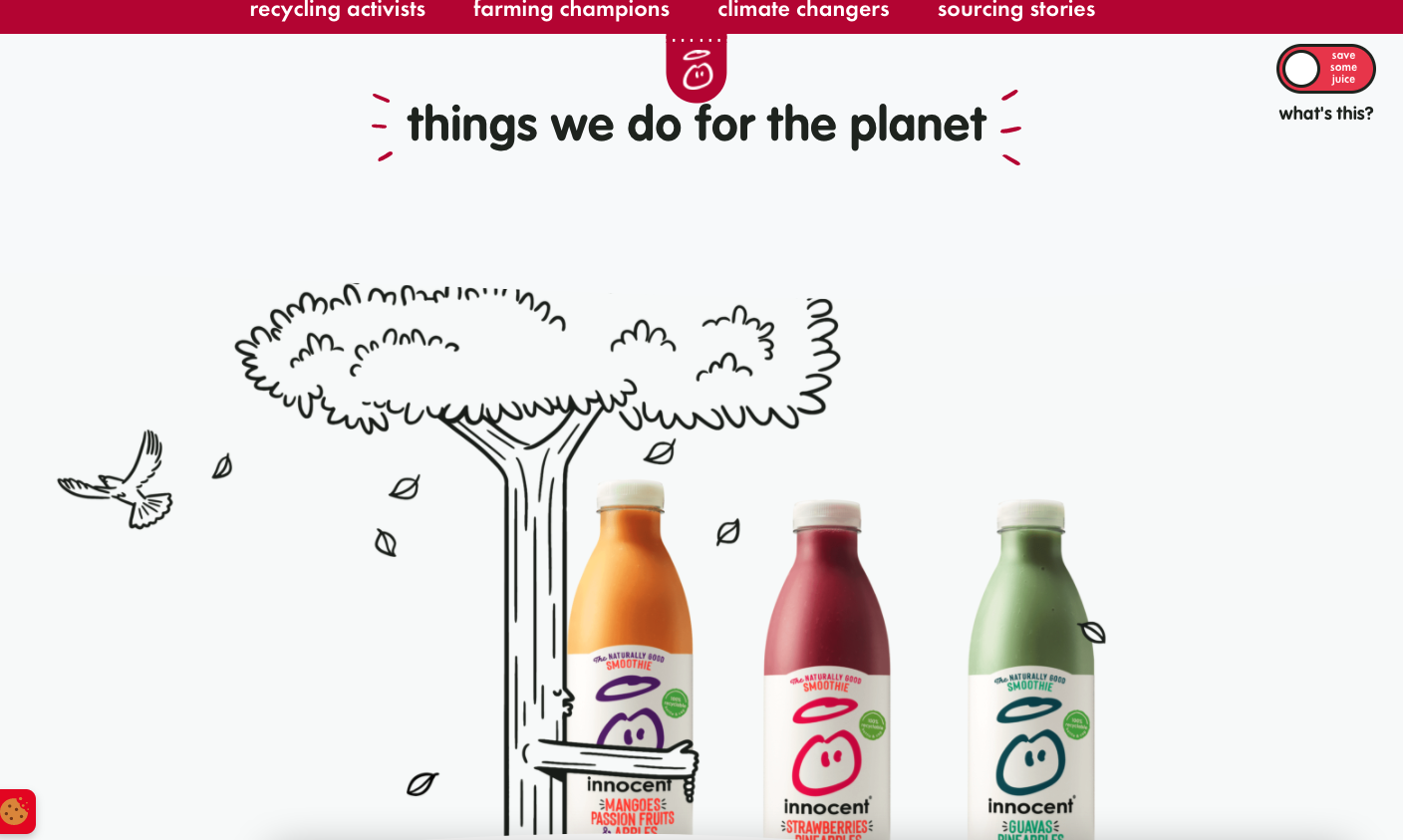
Innocent’s new carbon-neutral factory will use electricity from renewable sources
Innocent’s new carbon-neutral factory will use electricity from renewable sources

1. Collecting lots of data in itself is not sufficient Data needs to be enriched through analysis and used to make targeted improvements to your product or service.
2. Achieving a single view of the customer is key Ensure that qualitative insights – from questionnaires to social media engagements – are combined with quantitative data, such as website analytics, to improve the overall customer experience.
3. Personalise the offer as much as possible Consumers do not want to be sold a generic product or service; they want it to reflect their individual choices, habits and preferences.
4. Treat your loyal fans as collaborators rather than customers Invite them to be a sounding board for new products and ways of working. Social-media platforms – including closed groups – can be great forums for stress-testing ideas and gathering feedback.
5. Focus your social media investment on the right platforms for your brand Foodies might gravitate towards Instagram, while Twitter could show a more light-hearted side to the brand.
6. Ethics and sustainability are no longer a ‘nice-to-have’ but a consumer expectation Brands with purpose live their values and build ethics and sustainability into the entire business model.

Partner comment


Hector Hickmott, sales director, HSO
In retail, we are seeing more and more brands innovating and disrupting the market, coming up with new ways to better serve their customers and increase customer loyalty.
If you are still in a pile-it-high-and-sell-it-cheap model, you’re not providing consumers with the personalised service they want, you’re not able to operate your brand efficiently and it’s no longer a long-term, sustainable business model.
To be able to manage data and customers en masse and still be able to provide a more personalised, optimised service probably wasn’t possible 10 years ago. As 9 CX Disruptors explores, those retailers that have had the vision to bring technology and consumer expectations together are the ones that will flourish in today’s competitive market. Those are the retailers that truly have a single view of their customers and understand their wants and needs.
Often born out of opportunity and a better way of doing things, but also the need to transform for long-term sustainability, innovative retailers are carefully analysing their customer data and making targeted improvements in order to provide a more tailored, more customised and more personalised service. Not only are these retailers analysing buying behaviour, but they are also engaging with customers through social-media channels and, as Estrid, one of the brands highlighted in this report, puts it, using them as collaborators, gaining their input into decisions on what to launch and product design.
Working with some of the leading retail brands, such as Innocent and Seasalt, both of which are also featured in this report, has demonstrated that it’s not just the smaller, more nimble retailers that are disrupting the market. Doing it at scale, carving out your own niche and unique proposition is sometimes more challenging when you are a larger organisation. And in the case of Innocent, a brand with strong ethics, they have been able to completely change their business model in terms of how they produce and get their consumer goods to market to further live by them. As the report states, ethics and sustainability are no longer a ‘nice-to-have’ but a consumer expectation.
Fundamentally, the brand and proposition have to be able to meet a need and excite and engage consumers to maintain their loyalty, but all of that is underpinned by the data and technical capabilities that are available. It’s going to be exciting to see the next tranche of innovative brands and how they redefine the overall customer experience.
- Email: Nicola Hannay, info-uk@hso.com
- Phone: +44 (0) 203 128 7767
- Twitter: @HSO_Tweets
- LinkedIn: https://www.linkedin.com/company/hso
- Website: www.hso.com
9 CX disruptors, published in association
with HSO

Content lead: Nicola Harrison,
Head of commercial content, Retail Week

Business development manager: Sophie Nevin

Writer: Nick Hughes

Production: Rebecca Dyer

Design: Sam Millard




